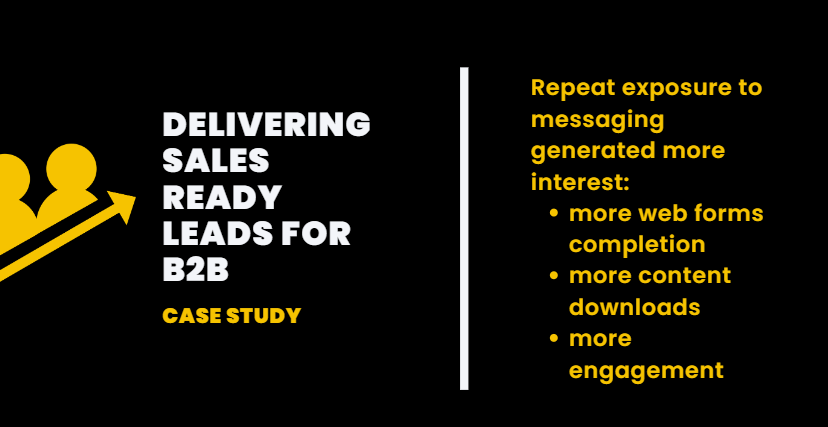Delivering a marketing strategy as an externalised team
Brief and goals
A client in the B2B space offering leadership programs had their previous marketing person leave the team. They had been looking to hire a full-time person with a broad range of skills, but their limited budget didn’t allow for a combination of senior-level experience and a wide combination of marketing skills.
Traditionally, the need for the programs fluctuated, but most intakes attracted between 20 to 25 students. These came mostly from recommendations, though there were considerate efforts in getting the people recommended from the programs, by previous students.
The objective was to create an integrated marketing strategy, including events, that was deployed on several channels, to ensure a constant flow of communication and an increased interest in the leadership programs. This was meant to support the internal sales team and make their meetings more productive, converting more leads to clients.
Setting the context
The client had challenges in recruiting someone that could develop and implement a marketing strategy. Our team started with an audit of the market, the competition and the client’s assets. Based on their objectives and the specifics of the audience, we identified needs on:
- Campaign strategy – setting up an USP (unique selling proposition), deciding on a mix of marketing channels
- Management of external providers – the client was working with a PPC agency, but it was managed by someone with no marketing expertise
- Events strategy to get in front of potential clients more
- Email marketing and lead nurturing to support the sales process
- Lead generation strategy through content marketing, social media marketing, events and inbound channels
- Content and copywriting for marketing materials – banners, flyers, brochures, videos, etc.
Once we mapped out the channels that we would be focusing on, we came up with a strategy, monthly budgets and lead targets, then started working on implementing the strategy.
The people involved in the project were formed of a mix between our agency team (a campaign director and a content marketer), other freelancers and agencies that we managed (digital ads, PR, design, video) and the client’s internal team (sales and support on events).
Basically, the account director from eMarketing Stars acted as an externalized marketing director for the client and the client obtained a marketing team instead of one full time professional.
The first 90 days
As in a new job, the first 90 days were focused on setting up the materials that we needed in order to better support the sales strategy:
1. Understand the market
We were experienced in working with the target market (senior professionals in medium and large companies, from all industries), so we could hit the ground running.
2. Establish the positioning
We’ve set the communication pillars – focusing not on features (information about courses, teachers or networking), but on the benefits for the target market (become a better leader, learn from peers that are facing similar challenges, get a 360 degree on business).
We wanted to ensure clients getting in touch with the marketing assets truly thought it spoke to them and that they could easily differentiate between other programs and those of our clients.
3. Increase urgency
We also highlighted aspects that would encourage conversion – FOMO (fear of missing out), focusing on why start a program now. We also started planning events that would have a set deadline to register and would show interest in the courses before the application deadline.
4. Go to market with all the above
To begin with, we’ve updated all marketing materials to include the messaging agreed above. Then, we’ve created new ones – articles, brochure, testimonials, interviews with alumni and lecturers, to highlight the USPs established.
Finally, we started deploying them on all marketing channels agreed – social media, digital ads, email marketing, partnerships with business communities, etc.
It is important to note that marketing is a long term game, even more so in the B2B space. In order to see optimal results, there needs to be consistency. The leads were repeatedly exposed to the messaging of the clients and interest increased steadily, with more people attending events, following the brand on social media accounts and signing up for the newsletter.
Impact on sales
The impact on sales could be seen gradually, but it became clearer after 6+ months:
- Recommendations continued to be the main source of leads, but these came now with limited to no effort from the client sales team. Since the product hasn’t changed during this time, it can be attributed to the increased marketing communication, that raised the profile of the program.
- Group sign-ups became more frequent. Instead of having individuals from companies, each program now has at least 3 groups of 3-5 individuals from the same company (5 being the maximum allowed by the client). They convince each other easily to sign up for the program.
- Time spent selling in sales meeting has decreased. The input from the sales team is that most sales meeting revolve now around specifics of the program (timing of classes, discussions on payment terms), rather than convincing.
Results
“The program has evolved so much that it seems like it’s now selling itself” – Academic Director of client
After 3 years of working together with the client, the program has increased to constantly having 30 to 35 attendees per intake (a 50% increase compared to before working together).
Given the increased interest in it, the client is now attempting to recruit for a third annual intake, instead of the two it did previously.




